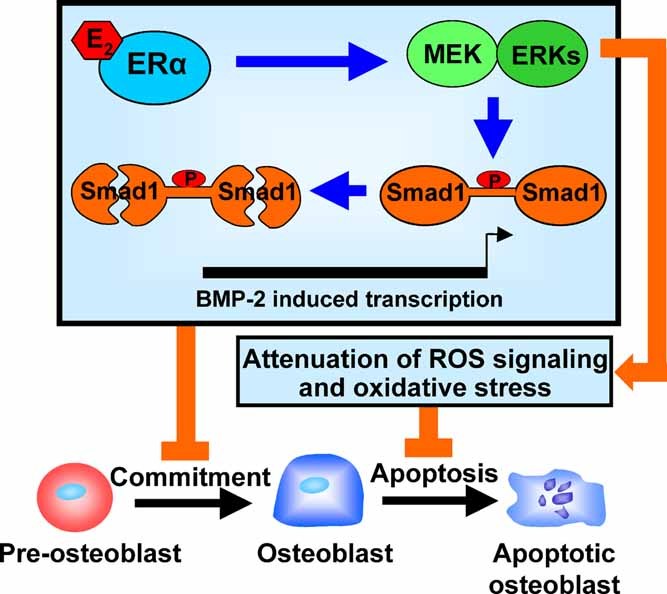Fig. 7.

DNA-binding-independent actions of ERα on osteoblasts. Estrogens attenuate BMP-2-induced transcription by promoting the phosphorylation of Smad1 at its linker region, which, in turn, increases the proteasomal degradation of Smad1. This latter effect of the ERα results from the activation of ERKs. This mechanism contributes to the suppressive effect of estrogens on osteoblastogenesis and thereby osteoblast number and bone formation. A similar ERK-dependent decrease of ROS by estrogens is responsible for the antiapoptotic effect of these sex steroids on osteoblasts. The unleashing of this inhibitory effect, on loss of estrogens (e.g., menopause), is responsible for the increased osteoblast number and bone formation as well as the increase in osteoblast/osteocyte apoptosis that ensues following acute estrogen deficiency.
